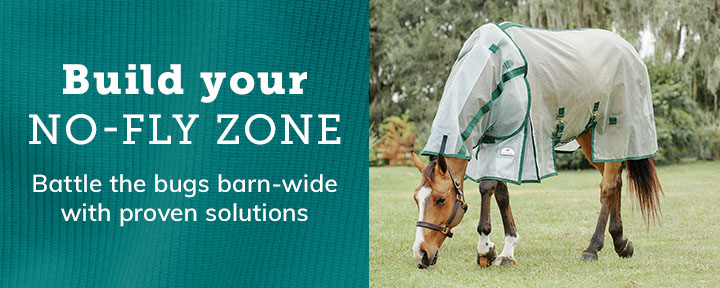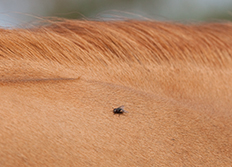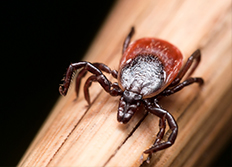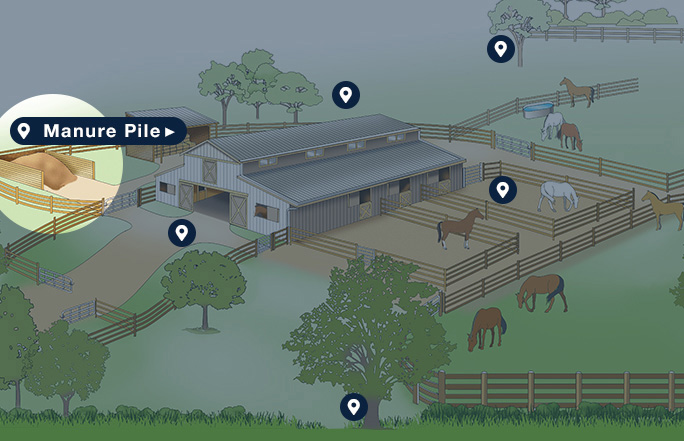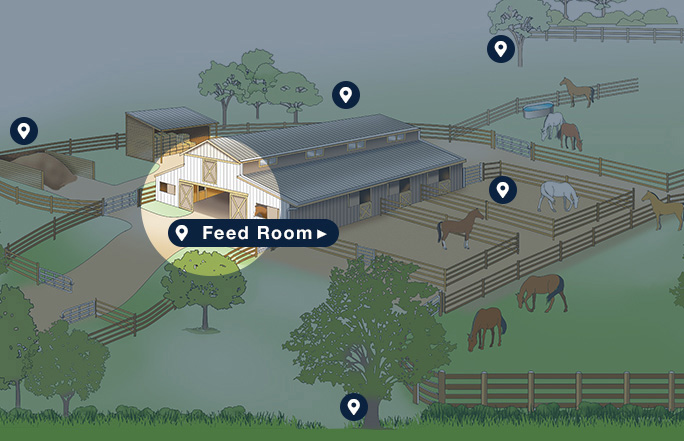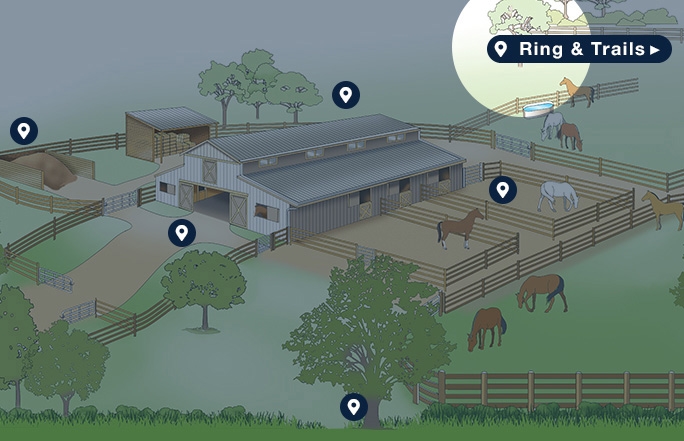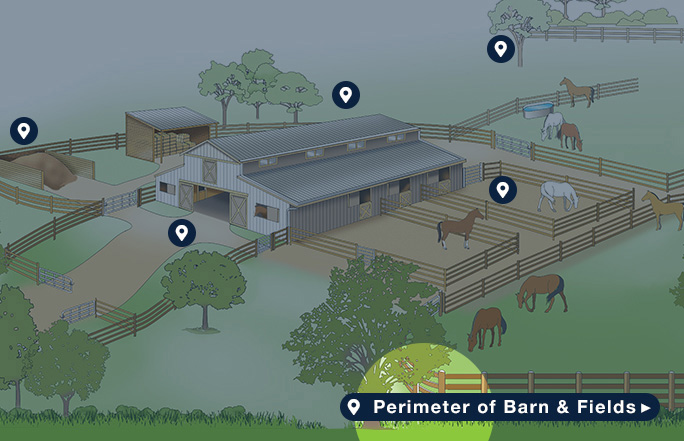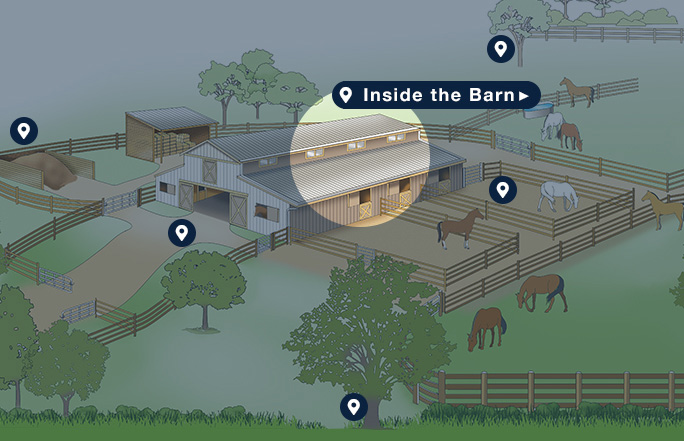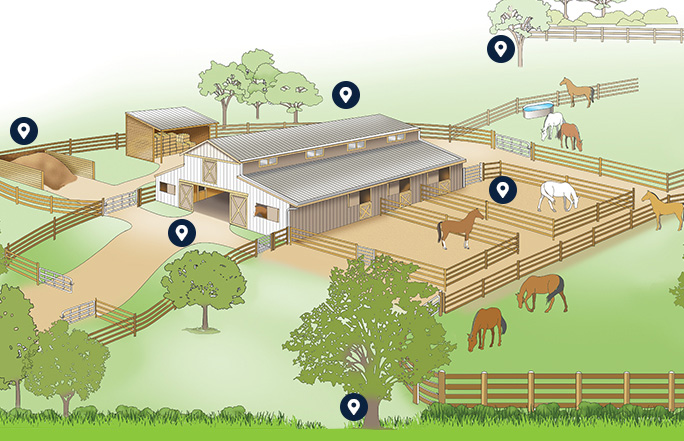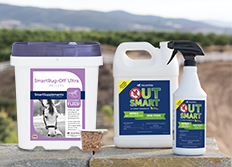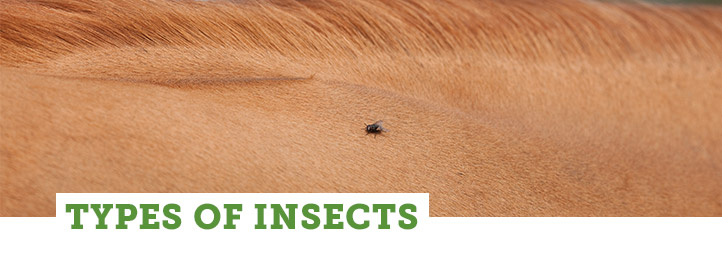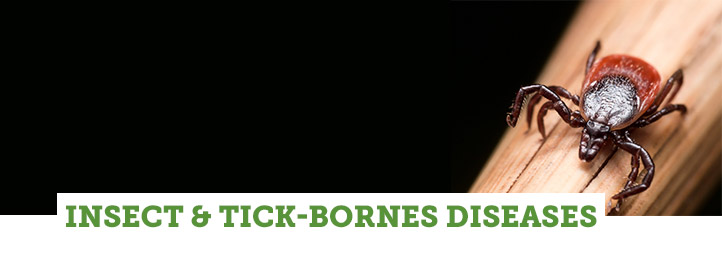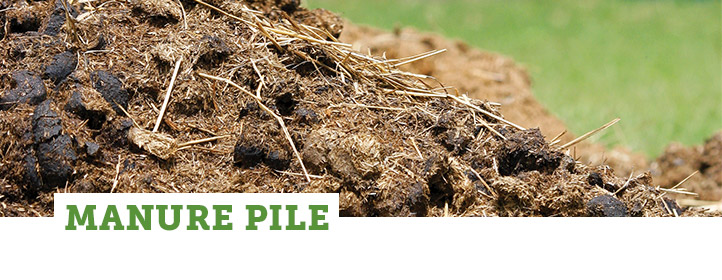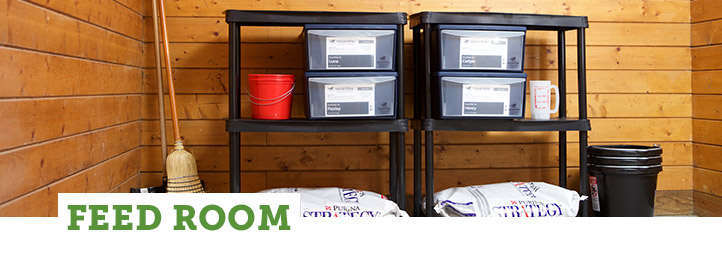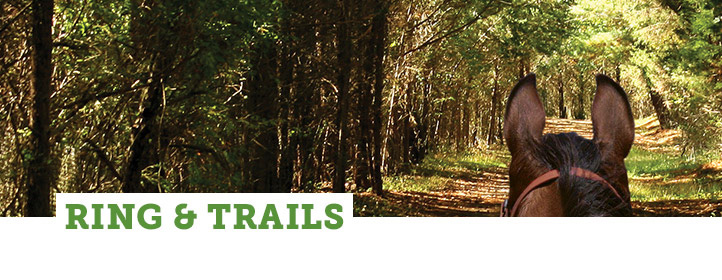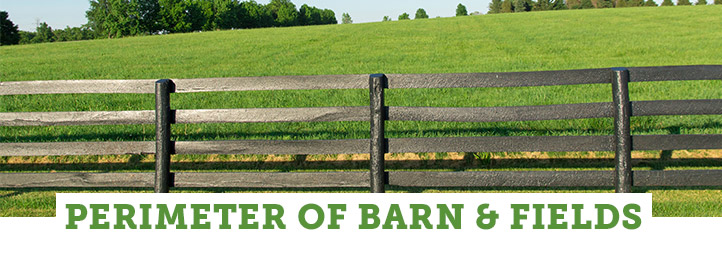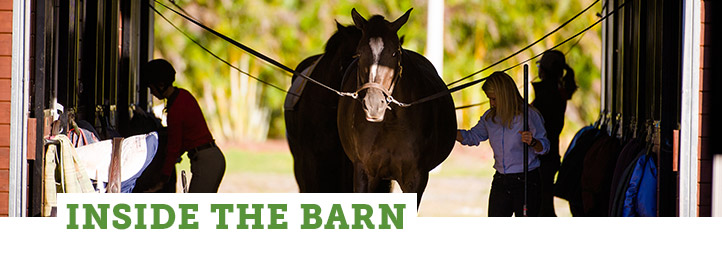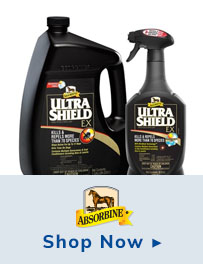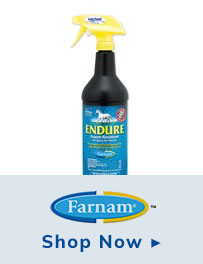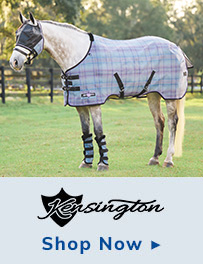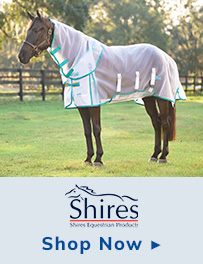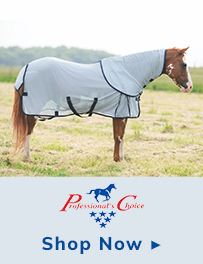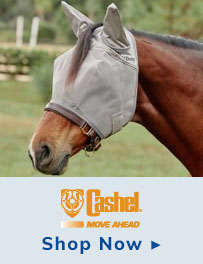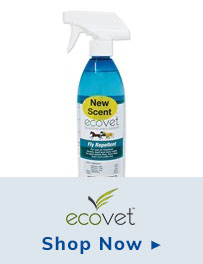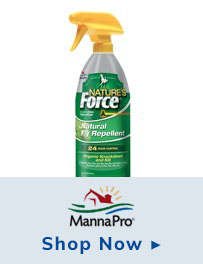Know Your Enemy
Fight the Flies on Every Front
Fight the Flies & Save!
The Problems You & Your Horse are Facing
Bugs are more than just a nuisance! From skin issues to serious diseases, they can lead to a variety of health challenges for your horse. Here, you’ll learn more about the flies that are bothering your horse and find out what problems they can cause.
Different insects require different strategies to combat them, so it’s important to understand which insects are bugging your horse before you put together your plan of attack. The common insects you might see around your farm include:
House Flies
The most common fly you'll see around horses is the non-biting House Fly, which reproduces mostly in manure. You'll find these flies going for the moisture in the eyes, but they can be found anywhere on your horse.
Stable Flies
The second most common fly around horses (and the most bothersome) is the Biting Stable Fly. These are blood feeders, and you'll find them on the forelegs and flanks of your horse, in particular. They can reproduce in spoiled vegetative matter, old mucky compost, and grass clippings as well as manure.
Mosquitoes
Mosquitoes are small insects that, like the Biting Stable Fly, are blood feeders. In addition to leaving irritating bites on your horse, mosquitoes can transmit several diseases to horses, including Equine encephalitis and West Nile Virus.
Ticks
Ticks are blood-sucking eight-legged arachnids that hitch on to your horse to feed. You'll commonly find them attached to your horse's legs or chest, but they could be anywhere on his body. Besides irritating your horse when they bite and latch on, they can transmit a variety of serious diseases, including Lyme disease.
Biting Midges
Biting Midges are tiny flies that are also called "no-see-ums." Another blood-sucking bug, they typically bite horses along the top-line or along the belly. Some horses are particularly sensitive to their bites and develop an allergic reaction known as "Sweet Itch."
Chiggers
Chiggers, which are the larval form of a specific species of mites, burrow into your horse's skin and create small, itchy bumps. You'll most commonly find their bites on your horse's head, chest, and neck.
Bot Flies
Bot flies are troublesome because they lay small, sticky yellow eggs on your horses haircoat, typically on the front legs, chest, shoulders, armpit, and mane. Bot eggs can be licked by the horse and hatch in their mouths fairly soon after they're deposited, which can lead to an internal parasite infestation. If you live in area where bot flies are a problem, it's important to remove eggs from your horse daily with a tool like a bot knife to prevent your horse from ingesting them.
Allergies
An allergy is an exaggerated response from the immune system to a substance in the environment, called an allergen. Allergic reactions are common in horses, and horses can develop allergies from a wide variety of things in their environment, including insects such as black flies, horn flies, and stable flies. Hives and intense itching of the skin, as well as coughing and nasal discharge, are the most frequent displays of allergies in horses.
Hives
Hives, also known as urticaria, are fluid-filled, raised swellings or "wheals" on a horse's skin. These bumps or plaque-like eruptions are generally round in shape and flat-topped, ranging from ½-inch in diameter to as large as 8 inches wide. Hives can be caused by many things, including bug bites.
Sweet itch
"Sweet Itch," also known as "summer itch" or summer seasonal recurrent dermatitis (SSRD), is an allergic reaction to the Culicoides biting midge or "no-see-um" gnat. The classic signs of "sweet itch" are a horse that becomes very itchy in the spring, often to the point of rubbing out its mane and tail hair. In addition to this "buzzed mane" and "rat tail" appearance, there may be a pattern of skin irritation all along the topline: from head and face, to neck and withers, to back and rump.
Summer sores
"Summer Sores" or "Fly Sores" is a seasonal skin disease in horses referred to by veterinarians as Cutaneous Habronemiasis. are characterized by one or more open and draining nodules and are typically found on the legs, inner corner of the eyes, and moist areas, especially where the skin has undergone injury or irritation. They are the result of an interruption in the normal life cycle of the stomach worm. Instead of Habronema and Draschia larvae passing into the manure, being ingested by fly larvae, then deposited on the horse's lips to be swallowed which completes the usual cycle, flies deposit the stomach worm larvae on other parts of the horse's body, leading to a severe local reaction that is often itchy.
Lyme Disease
Lyme Disease is a bacterial infection that is spread by the deer tick, or blacklegged tick. It is most prevalent in New England plus the surrounding states Pennsylvania, New York, New Jersey, Maryland, and Virginia, as well as the upper Midwest. In horses, clinical signs of Lyme Disease are vague, and can include sporadic or shifting lameness, swollen joints, fever, a hypersensitivity to being touched, poor performance, and more.
Equine encephalitis
Eastern and Western Encephalitis (known as EEE and WEE) are viral infections of the brain and spinal cord in horses that are transmitted by mosquitoes. Like many infections, EEE and WEE initially cause listlessness, lack of appetite, and fever, but within a day, a horse with either disease will show neurological signs such as changes in behavior, incoordination, muscle twitches, and more.
West Nile virus
West Nile virus is transmitted through mosquitoes, and can cause encephalitis, or an inflammation of the brain and spinal cord. The clinical signs of this disease in horses include fever, incoordination and stumbling, weakness, and more.
Find Solutions for Every Area On Your Farm
When it comes to battling the bugs, it’s important to have a barn-wide system that has every area on your farm covered. Read on to learn about the different types of fly control to use where so you can create the ultimate plan of attack for your farm.
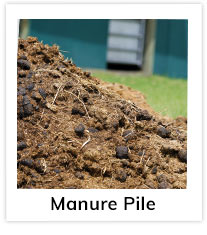
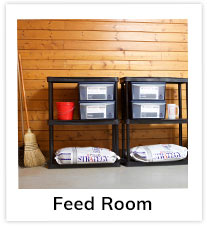
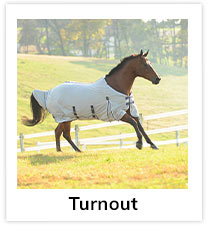
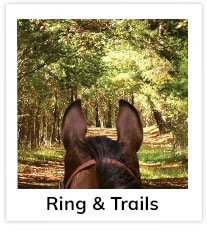
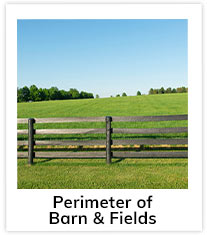
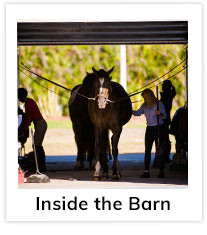
The best way to keep the fly population on your farm in check is by making sure larvae can't mature into adult flies. That's why your insect control plan starts at the manure pile, which serves as a breeding ground for flies. These tiny, beneficial bugs stop adult pest flies from developing by feeding upon and breeding within the developing (pupal) stages of manure breeding flies.
How Fly Stoppers Work
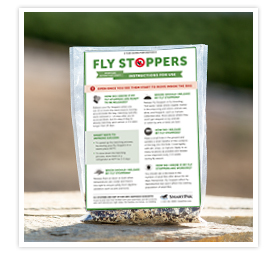
Fly Stoppers work by seeking out their target host - the fly pupae - and depositing their eggs inside them. These eggs then hatch and begin to grow and feed on the developing fly, thus stopping the adult pest fly from hatching. Once mature, the Fly Stoppers emerge from the fly pupae to look for a mate and the female Fly Stoppers™ continue to lay eggs in fly pupaes. The Fly Stoppers will continue to busily lower the flow population, and you and your horse won't even notice them!
When to Use Fly Stoppers
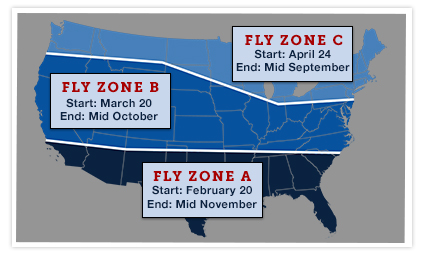
Fly Stoppers are designed to be used throughout fly season, and when you first release them depends on where you live. Check out the map below to determine the ideal time to start your shipment, keeping in mind that you may want to shift up or down a zone depending on the elevation and microclimate of your particular area.
How to Use Fly Stoppers
Your Fly Stoppers will be shipped via US Mail as parasitized fly pupae in wood shavings. When you receive them, check for evidence of hatching. Once a few have hatched, simply disperse small handfuls or scoops around your property into "hot spot" breeding areas, such as near manure piles, under water troughs, below bedding, the corners of pens and paddocks, and feeding sites. To protect the pupaes, cover each handful with dirt.
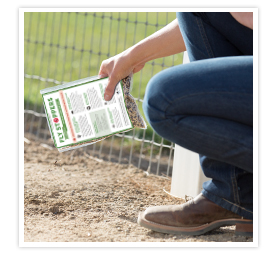
Fly Stoppers reproduce in approximately three weeks to replenish the beneficial insect population, but pest flies do reproduce at a faster rate than Fly Stoppers. Because of that, Fly Stoppers must be reintroduced to your property on a regular basis. You'll want to release a shipment of Fly Stoppers every three to four weeks throughout fly season for maximum results, and that's why we recommend ordering them on AutoShip. Besides the fact that you won't have to worry about remembering to reorder every month, you'll save 5% on every shipment!
Your next step is to help your horse defend himself from the inside. A daily insect control supplement is the smartest way to help ensure that your horse has what he needs to build his own personal no-fly zone.
How Insect Control Supplements Work
There are two main types of insect control products to choose from: EPA-approved insect growth regulators, which help reduce the population (but are most effective when fed to all horses on the property) and insect defense supplements, which make your horse unappealing to biting bugs, and work well even if you're the only one feeding it.
If you're looking to band together with your barn mates and start all of the horses on the property on an insect control product, you'll want to consider choosing an insect growth regulator. Formulas in this category are feed-through larvacides that inhibit the development of house and stable flies. They provide targeted ingredients such as cyromazine, which passes safely through the horse's system to affect the fly larvae in manure.
If everyone in your barn isn't on board, pick an insect defense supplement than can help give your horse his own personal no-fly zone. Formulas in this category provide key ingredients like garlic, apple cider vinegar, and brewer's yeast to help discourage insects from biting your horse. Even if you're giving your horse an insect growth regulator, this type of formula is a great addition to your program, too, because it can help protect your horse from bugs that might migrate from nearby barns.
Click the link to learn more about the different types of insect control supplements including their key ingredients and what you can expect when supplementing.
Shop All Insect Control Supplements
Success Stories from Riders Like You
When we say that insect defense supplements will help make bug season enjoyable for you and your horse, you don't have to take our word for it! Check out these stories from riders like you who have used insect defense supplements for their horses:
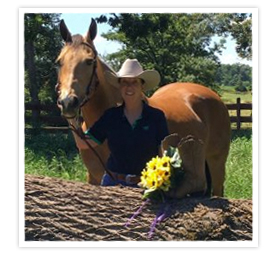
"After she was on the supplement for six weeks, I noticed that she didn't seem to be plagued with annoying flies."
Meet Carol & Becky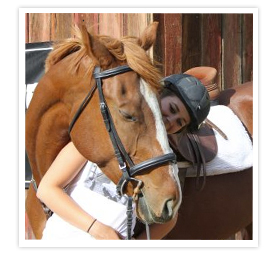
"I give the supplement to both of my horses now and they are so comfortable during bug season!"
Meet Delani, Diva & Dani
"I'm very happy with the results and how comfortable William was last bug season."
Meet Marsha & WilliamWhen your horse is outside, you’ve got two solutions that can help on top of a feed-through supplement: fly spray, which helps ward off insects, and physical barriers like fly masks, fly sheets, and fly boots, which deny insects access to your horse.
Fly Spray & Repellents
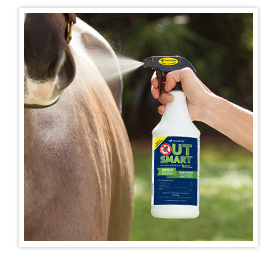
No one wants their horse to spend his entire time in turnout stomping and swishing his tail! Applying fly spray before your horse goes outside is a smart way to help give him the protection he needs to beat the bugs.
How Fly Spray & Repellents Work
Fly sprays and repellents can work in three different ways. First, they can act as insecticides, which means that they're able to kill insects. Next, they can repel insects. This means that they'll discourage flies from landing on your horse but won't actually kill them. Finally, they can confuse flies and prevent them from even finding your horse.
But how do you know which way the fly spray you're looking at will work? The ingredients, of course! If you're looking for an insecticide, choose a fly spray that contains permethrin, pyrethroids, and/or pyrethrins. If you're looking for a plant-based formula that repels insects, choose one with ingredients such as peppermint, geraniol, and citronella. If you want to try a formula that confuses insects, look for one that contains fatty acids such as octanoic acid, nonanoic acid, and decanoic acid.
How to Choose the Right Fly Spray & Repellent for Your Horse
When you're choosing a fly repellent for your horse, the first question that you should ask is, "What form do I want it to come in?" That's because fly repellents come in a variety of forms and sizes - from sprays to roll-ons to concentrates.
Fly spray is the most common form, and you can use it to mist your horse's body. Most fly sprays come either in a spray bottle or in a concentrate that you dilute, which is generally the most economical solution. Roll-ons are a good way to apply repellent around more sensitive areas, like the face, while ointments are a great way to keep bugs off of wounds or out of your horse's ears.
Once you've narrowed down your options by choosing the right form for your situation, you'll want to consider the following benefits:
-
LONG-LASTING
If you're not going to be able to spray your horse every day, look for a fly spray that's designed to last. While some fly sprays need to be applied daily, others may stay active for as long as 17 days! Shop Long-Lasting Fly Spray
-
SWEAT-RESISTANT
If your horse spends his summers sweating, you don't want him to sweat that fly spray right off! Choose a fly spray with a conditioner that binds to the hair shaft if you want your horse's fly spray application to last through hot days in turnout and summer rides. Shop Sweat-Resistant Fly Spray
-
SUN PROTECTION
If providing your horse with sun protection is one of your key concerns, you'll be happy to know that many fly sprays also contain sunscreen. You'll see "UV protection," "UPF," or "sunscreen" included on the label and in the product descriptions for fly sprays that contain sun protection. Shop Sun Protection Fly Spray
-
PLANT-BASED
Look for a fly spray with ingredients such as peppermint, geraniol, and citronella if you'd prefer to take a plant-based approach rather an insecticide-based approach to fly control. Shop Plant-Based Fly Spray
-
DESIGNED FOR HORSE AND RIDER
Some fly sprays should only be used on your horse, while other fly sprays are designed to be used by both horse and rider. If you want to be able to use your horse's fly spray on yourself, too, be sure to check the instructions on the label of the fly spray you're interested in. Shop Fly Spray for Horse & Rider
Shop All Fly Sprays & Repellents
Fly Masks
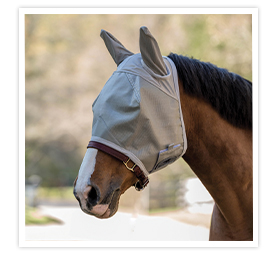
A fly mask is the perfect way to keep the bugs away from your horse's sensitive face, eyes, and ears when he's in turnout.
How to Choose a Fly Mask for Your Horse
Just like anything else in the horse world, not all fly masks are created equal. When you're choosing a fly mask for your horse, consider the following key features:
-
MATERIAL
Most fly masks are made from lightweight, breathable mesh that will protect your horse's face while still allowing air to pass through. If your horse is sensitive and get rubs easily, look for a mask that offers fleece lining along the seams to help keep him comfortable.
-
EAR COVERAGE
The most basic fly mask provides coverage just for your horse's face and has holes for your horse's ears to poke through. Other fly masks offer protection for your horse's ears. If your horse is particularly sensitive or you keep your horse's ears clipped, you should consider getting a fly mask with ears to ensure that they stay protected.
-
NOSE COVERAGE
Fly masks are available both with protection for your horse's nose and without. Depending on the particular style, the nose coverage may be removable, or it may be permanently attached to the rest of the fly mask. If your horse is particularly sensitive or has a white nose that tends to get sunburnt, he may benefit from the extra protection of a fly mask with nose coverage.
-
EYE DARTS
Eye darts allow the mask to "tent" over your horse's eyes, preventing rubbing and irritation. This is especially useful if you're using a fly mask to help a horse cope with an eye injury, as many veterinarians will often recommend.
-
UV PROTECTION
If your horse has white markings on his face that tend to get sunburnt or you're concerned about his coat color fading, be sure to look for a fly mask that offers UV protection. Look for the phrase "UV protection" in description of the fly mask you're looking at. It's usually accompanied by a percentage, which refers to the amount of the sun's rays that it blocks. The higher the percentage, the more protection it provides!
How to Measure Your Horse for a Fly Mask
Fly masks are sized like halters, where the size corresponds to your horse's size or breed. In general, you can select the size that most closely matches your horse's description and get the right fit. But keep in mind that every horse is different, so you may need to size up or down depending on your individual horse. The most common sizes you'll see include:
- Small Pony/Weanling
- Large Pony/Yearling
- Cob/Arab
- Horse
- Warmblood
- Draft
Some fly mask brands offer detailed size charts with instructions on how to measure your horse to find the perfect size. Though it varies from brand to brand, you'll typically need to measure your horse in these three areas:
- Down the center of the face from the poll to mid-face
- Around the throat
- Around the head at mid-face
Once you have your three measurements, you can then match them to the measurements listed on the fly mask's size chart to find the appropriate size for your horse. To find the most accurate measuring instructions and sizing information for the specific fly mask you're considering, be sure to check out the "Sizing" section for that fly mask at SmartPak.com.
We know it can be tough to fit a fly mask without actually trying it on your horse, and that's why SmartPak offers free return shipping on all sized items, including fly masks. That means that if you don't get the perfect fit the first time, you can exchange it for free!
Fly Sheets
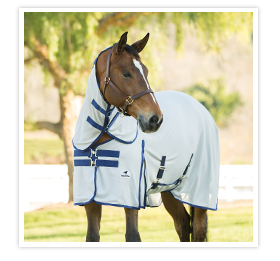
Using a fly sheet is a smart way to give your horse a full-body physical barrier against biting pests. Plus, they're not only great for blocking bugs - they can be great for blocking sun, too!
How to Choose a Fly Sheet for Your Horse
The number of fly sheets available may make choosing the right one for your horse seem impossible, but we're here to help! Here, we'll walk you through the key factors you should consider when choosing a fly sheet.
Amount of Coverage
One feature that differentiates one fly sheet from another is the amount of coverage it provides. When you're evaluating how much coverage a fly sheet will offer your horse, look for the following features:
-
NECK COVER
Just like with your horse's turnout blankets, fly sheets are available with neck covers. Some neck covers are permanently attached to the fly sheet while others can be removed. If you want to have the option to leave your horse's neck uncovered or keep it covered, be sure to look for a fly sheet that has a detachable neck cover.
-
BELLY WRAP
A belly wrap is a wide piece of fabric that, as the name suggests, wraps under your horse's belly. Along with providing extra coverage for your horse in that sensitive area, it helps keep the fly sheet securely on your horse.
-
OVERSIZED OR FULL-WRAP TAIL FLAP
Some fly sheets offer an oversized tail flap for extra protection. Others have a full-wrap tail flap, which means that it is completely attached to the sheet. This prevents bugs from sneaking in through the gap that is created when the sides of the tail flap aren't attached to the sheet.
-
LENGTH
There are fly sheets that are intentionally cut long to provide extra leg protection. If you'd like to provide coverage in this area, look for styles that have an extra "drop" at the front and hind legs. You'll typically find this feature in Rambo and Amigo fly sheets.
Material
Most fly sheets are made from lightweight, breathable fabric to prevent insects from landing on your horse without causing your horse to overheat. You'll most commonly find fly sheets made from polyester, but keep in mind that not all fabrics are created equal. If you have a horse that tends to be hard on his clothes, look for a fly sheet made from PVC coated polyester mesh, polyester/polypropylene, Textilene, or nylon mesh, because these fabrics are designed for durability. Some fly sheet fabrics are treated with insect repellent, so keep an eye out for that option if you want to provide the ultimate protection. To find fly sheets for this option, check the descriptions of the fly sheets you're interested in at SmartPak.com and look for it in the benefits. One of the popular types of repellent used on fly sheets is called No-Fly Zone™, so keep an eye out for that in the name of the fly sheet.
UV Protection
The sun's rays aren't just harmful for you - they can negatively impact your horse, too! Too much exposure to the sun can cause your horse's coat color to fade, especially if you have a dark-colored horse. Many fly sheets offer UV protection to help prevent sun-bleaching, so your horse can show off his true colors no matter what time of year it is. Look for fly sheets that tout a percentage of "UV protection" as one of the benefits and keep in mind that the higher the percentage listed, the more blockage it provides.
Other Basic Features
Along with the three key features described above, there are other basic features that differentiate one fly sheet from another. If you're torn between a few different fly sheets that meet all of your requirements for coverage, material, and UV protection, consider using these basic features to break the tie:
-
FRONT CLOSURES
Similar to other types of horse blankets, there are a variety of types of front closures to choose from. The most common types include:
- Buckle-Front - Just like a regular belt buckle, usually nylon straps with a metal buckle. This option offers a lot of adjustability.
- Surcingle - Also known as "T-locks", surcingle closures on the front of the fly sheet will function just like the belly surcingles, with two metal pieces that interlock to keep the fly sheet closed.
- Quick-Clip - Any metal snap or clip fastener that you can open and close with one hand. This type of fastener is really "handy" to have if you're taking fly sheets on and off repeatedly.
- V-Front - Usually cut a little higher on the neck, V-Front fly sheets fasten lower on the chest, eliminating pressure when the horse has his head down.
Shoulder gussets
These allow the sheet to offer a bit more "give" in the shoulder area, allowing for greater freedom of movement. If your horse tends to spend his time outside on the move, a fly sheet with shoulder gussets is a smart choice.
Surcingles
Surcingles are the straps that cross under your horse's belly, securing the fly sheet in place. More surcingles equals a more secure fit, so look for sheets that offer two or three surcingles if your horse is going to be wearing his fly sheet when he's turned out.
Leg straps
Nylon or elastic leg straps help prevent shifting and keep the fly sheet secure on your horse.
Tail cord
Some fly sheet styles offer a tail cord instead of leg straps. A tail cord clips from one side of the sheet to the other underneath your horse's tail. Like leg straps, it will help keep the fly sheet in place. Some tail cords are covered in PVC or rubber, which makes them super easy to clean!
How to Measure Your Horse for a Fly Sheet
An ill-fitting fly sheet can restrict your horse's movement, cause rubs, shift, or even get tangled. Like with any other blanket, finding the perfect fit in a fly sheet starts with knowing your horse's size. Fly sheets are sized like your horse's other sheets and blankets, so if you already know your horse's blanket size, you're already one step ahead of the game! If you're not sure what size blankets your horse wears, you'll want to start by measuring him.
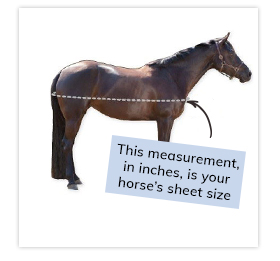
To measure your horse, start at the center of your horse's chest and run a cloth tape measure along his side to the point of the buttocks where the "cheek" meets the tail. Include the widest part of his shoulder and keep the tape measure level and taut (we suggest having a friend help you). The number of inches is your horse's true size (note: some brands run a little large or small, so we recommend checking out the hundreds and hundreds of product reviews left by horse owners like you!).
See it in action:
How to Evaluate Your Horse's Fly Sheet Fit
Since your horse will be wearing his fly sheet in turnout, you want to be sure that he's comfortable in it while he's moving around. Test the fit of your horse's new fly sheet by watching him walk and graze in it, because these natural movements will highlight flaws in the fit. You'll want to pay special attention to the fit in three key areas:
-
SHOULDERS:
The top of the front closure should line up with the point of your horse's shoulder, and the neckline should lie smoothly above his shoulder without pulling.
-
WITHERS:
A fly sheet that's pulled tight across your horse's withers is a recipe for rubs. You should be able to slide one hand between the blanket and your horse's withers.
-
LENGTH:
A fly sheet shouldn't look like a mini-skirt or a bed skirt. Ideally your horse's blanket should cover your horse's barrel entirely, ending just below his elbow and stifle, unless it's specifically designed to drop lower over the legs. If that's the case, the belly is the easiest place to confirm whether your fly sheet is the proper length.
We know that you want to be sure that your horse's fly sheet is the perfect fit, so SmartPak offers free return shipping on all sized items, including fly sheets. That means that if you don't get the perfect fit the first time, you can exchange it for free!
Fly Boots
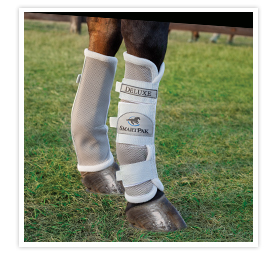
If your horse spends his time outside stomping, consider protecting his legs from the pests with a set of fly boots.
How to Choose Fly Boots for Your Horse
Just like fly masks and fly sheets, there are a few key features that you can consider when you're trying to choose between different fly boot styles, including:
-
MATERIAL
Fly boots are typically made from a mesh material, which allows for maximum airflow so that your horse's legs stay both cool and protected from biting flies. If your horse is sensitive and prone to rubs, look for boots that have a fleece trim for extra comfort.
-
CLOSURES
Most fly boots are fastened with Velcro straps, which makes them easy to take on and off. Just like with blankets, more straps equal a more secure fit, so look for boots that offer three straps to ensure they stay in place.
How to Measure Your Horse for Fly Boots
Poorly fitting fly boots could slide down on your horse's legs or cause uncomfortable rubs, so it's important to find the right fit for your horse. Sizing can vary from manufacturer to manufacturer, but fly boots are often sized by horse type and size, such as "Pony," "Cob," and "Horse," or simply as "Small," "Medium," and "Large."
If you're not sure which size will be right for your horse, you can measure your horse and then match the measurement you get to the appropriate size on the size chart for the fly boot you're interested in purchasing. Fly boots are typically designed to cover your horse's front legs from the top of his hoof to just below his knees and his hind legs from the top of his hoof to just below his hocks, so you'll want to measure the length of your horse's legs between those key points.
Because sizing can vary, be sure to check out the size chart for the style that you're interested in to ensure that you get the perfect fit.
Bugs aren't just a bother for your horse when they're in turnout - they can make riding less enjoyable, too! In addition to using your favorite fly spray before you mount up, consider getting fly gear that's designed to help your horse beat the bugs when you're riding, whether you're in the ring or out on the trails.
Ear Nets
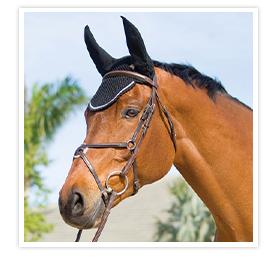
If you want to keep the bugs away from your horse's ears while you're in the saddle, consider getting an ear net. Also called ear bonnets or fly veils, ear nets are designed to prevent bugs from getting into your horse's ears. The "ears" of an ear net are typically made from a stretchy material like lycra or spandex mesh for a comfortable fit. Ear nets come in a variety of styles and colors, so you can choose the perfect one to show off your horse's style. You can even get them rhinestones or crystals to add a little extra sparkle to your ride!
Fly Masks
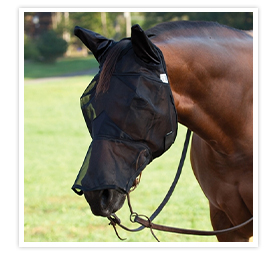
Fly masks aren't just for turnout - there are fly masks designed specifically for riding, too! If you're looking to eliminate insect-driven head tossing out on the trails, consider getting a fly mask designed for riding, like the Cashel Quiet Ride Fly Mask. This fly mask is made from a soft, lightweight mesh and it fastens quickly and easily over most bridles without affecting your horse's vision.
Shop Cashel Quiet Ride Fly Masks
Even if you're using Fly Stoppers to prevent flies from developing on your property, it's likely that you'll still get unwelcome visitors from your neighbors. That's why it's a smart idea to stock up on fly control solutions for the perimeter of your barn and fields.
Fly Traps
Fly traps are designed to catch flies before they get near your horse. Because they attract flies, you shouldn't hang them too close to your barn and horses. Instead, hang them outside the barn and on your property's perimeter to trap invaders from neighboring properties. Be sure to check them throughout fly season and replace them when they get full for maximum effect.
Mosquito® Dunks
If you have standing water on your property, you've likely discovered that it's a breeding ground for mosquitoes. Fortunately, you can easily handle your mosquito problem with Mosquito Dunks! A Mosquito Dunk looks like a small, beige donut that floats on standing water. As the Mosquito Dunk dissolves, it releases a larvacide that kills mosquito larvae before they have the chance to mature. To control the mosquito population your farm, simply place Mosquito Dunks in the standing water on your property once a month throughout fly season. Mosquito Dunks are safe to be used in drinking water, so you can even place them in the water troughs in your horse's turnout.
If you have your own farm and are looking for the ultimate protection for inside the barn, consider a fly control system like the Pyranha Spray Master System. This system dispenses an insect repellent in the form of a very fine mist through spray nozzles. It's automatically timed to spray at specific intervals, which means you can set it up and stop worrying about flies!
Buy the Pyranha Spray Master System
Top Fly Control Brands
Save On Our Smart Solutions
Are you ready to build the ultimate no-fly-zone for your horse and farm? Check out our special deals on fly control below, or click here to shop from our full selection of insect control solutions.
